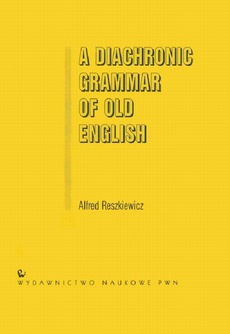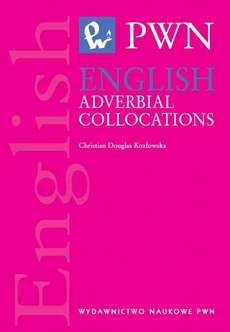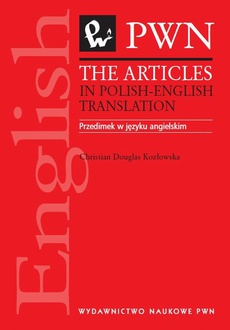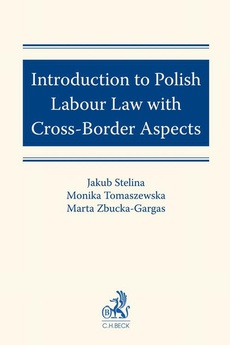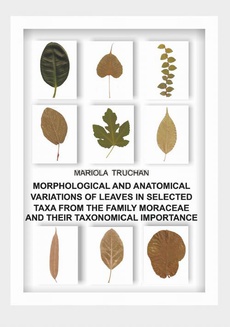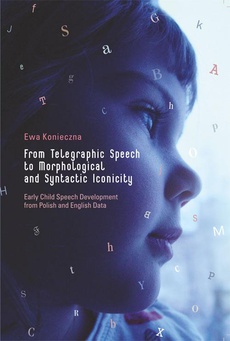POLECAMY

Introduction to Morphological Analysis
Autor:
Wydawca:
Format:
ibuk
Publikacja to podręcznik z dziedziny morfologii języka angielskiego. Obejmuje on wszystkie typy i poziomy morfologii, bardzo dobrze wykorzystując dostępną literaturę fachową i odzwierciedlając współczesny stan badań nad językiem angielskim. Jest to dobrze napisana, solidna od strony naukowej, książka pomocnicza dla studentów do zajęć z gramatyki opisowej i kontrastywnej polsko-angielskiej, również do zajęć specjalistycznych.
| Rok wydania | 2008 |
|---|---|
| Liczba stron | 316 |
| Kategoria | Język angielski |
| Wydawca | Wydawnictwo Naukowe PWN |
| ISBN-13 | 978-83-01-14353-4 |
| Numer wydania | 3 |
| Język publikacji | polski |
| Informacja o sprzedawcy | ePWN sp. z o.o. |
Ciekawe propozycje
Spis treści
| PREFACE | 11 |
| PART I: BASIC TERMS AND CONCEPTS | 13 |
| Chapter I. Morph, morpheme, morphology,.... | 13 |
| 1.0. Introductory | 13 |
| 1.1. The morpheme | 14 |
| 1.2. Word and lexeme | 16 |
| 1.3. Morpheme and morph | 18 |
| 1.4. Allomorphy | 18 |
| 1.5. Inflection and derivation | 20 |
| 1.6. Stem and base | 21 |
| 1.7. Inflectional paradigms | 21 |
| 1.8. Creativity and productivity | 23 |
| 1.9. The place of morphology in the grammar | 26 |
| 1.10. The lexicon | 27 |
| 1.11. Lexicalization and blocking | 29 |
| Chapter II. Morphoiogical processes and word-manufacturing | 32 |
| 2.0. Introductory | 32 |
| 2.1. Concatenative processes | 35 |
| 2.1.1. Compounding | 36 |
| 2.1.1.1. Introductory | 36 |
| 2.1.1.2. Problems of definition | 36 |
| 2.1.1.2.1. Stress and prominence | 37 |
| 2.1.1.2.2. Orthography and uninterruptability | 41 |
| 2.1.1.2.3. Meaning | 42 |
| 2.1.1.3. Problems of classification | 43 |
| 2.1.1.3.1. Syntactic criterion | 44 |
| 2.1.1.3.2. Constituent-structure criterion | 47 |
| 2.1.1.3.3. Semantic criterion | 53 |
| 2.1.2. Incorporation | 61 |
| 2.1.3. Affixation | 62 |
| 2.1.3.1. Introductory | 62 |
| 2.1.3.2. Suffixation | 63 |
| 2.1.3.3. Prefixation | 63 |
| 2.1.3.4. Interfixation | 64 |
| 2.1.3.5. Infixation | 65 |
| 2.1.3.6. Circumfixation | 66 |
| 2.1.3.7. Notę on "prefixal-suffixal" derivation | 66 |
| 2.1.3.8. Transfixation | 68 |
| 2.1.3.9. Othertypesofaffixation | 69 |
| 2.1.3.9.1. Postfixation | 69 |
| 2.1.3.9.2. Suprafixation | 70 |
| 2.2. Nonconcatenative morphology | 71 |
| 2.2.1. Reduplication | 71 |
| 2.2.2. Internal modification | 76 |
| 2.2.2.1. Yowel modification | 77 |
| 2.2.2.2. Consonant modification | 79 |
| 2.2.2.3. 'Mixed' modification | 81 |
| 2.2.3. Conversion and paradigmatic derivation | 81 |
| 2.2.4. Back-derivation | 92 |
| 2.3. Word-manufacturing | 96 |
| 2.3.1. Clipping | 97 |
| 2.3.2. Blending | 99 |
| 2.3.3. Acronymization | 101 |
| 2.3.4. Analogical formation | 102 |
| 2.4. Concluding remarks | 104 |
| Chapter III. Derivational types and derivational categories | 106 |
| 3.1. Preliminaries | 106 |
| 3.2. Approaching categorization in word-formation | 108 |
| 3.3. Transpositional, lexical and tautological derivations | 120 |
| 3.4. Prototype theory and morphological categorization | 127 |
| PART II: MAJOR CATEGORIES OF ENGLISH DERIYATIONAL MORPHOLOGY | 135 |
| Chapter IV. Derived nouns | 135 |
| 4.1. Nomina Actionis | 135 |
| 4.1.0. Introductory | 135 |
| 4.1.1. O (conversion) | 138 |
| 4.1.2. -ation | 140 |
| 4.1.3. -ment | 144 |
| 4.1.4. -al | 147 |
| 4.1.5. -ance/-ence | 149 |
| 4.1.6. -age | 151 |
| 4.1.7. -ure | 151 |
| 4.1.8. -y | 152 |
| 4.1.9. Residual types | 153 |
| Exercises | 154 |
| 4.2. Nomina Essendi | 154 |
| 4.2.0. Introductory | 154 |
| 4.2.1. -ness | 155 |
| 4.2.2. -ity (-ty, -y) | 157 |
| 4.2.3. -(anc)y/-(enc)y | 163 |
| 4.2.4. -(ac)y | 166 |
| 4.2.5. -(it)ude | 168 |
| 4.2.6. -ism | 169 |
| 4.2.7. Residual types | 169 |
| Exercises | 171 |
| 4.3. Subject nominalizations | 171 |
| 4.3.0. Introductory | 171 |
| 4.3.1. Agentive nominalizations | 174 |
| 4.3.1.0. Introductory | 174 |
| 4.3.1.1. -er | 176 |
| 4.3.1.2. -or | 180 |
| 4.3.1.3. -ant/-ent | 180 |
| 4.3.1.4. -ee | 181 |
| 4.3.1.5. O (conversion) | 182 |
| 4.3.1.6. Residual types | 184 |
| Exercises | 188 |
| 4.3.2. Instrumental nominalizations | 188 |
| 4.3.2.0. Introductory | 188 |
| 4.3.2.1. -er | 191 |
| 4.3.2.2. -or | 192 |
| 4.3.2.3. -ant/-ent | 193 |
| 4.3.2.4. -ing | 194 |
| 4.3.2.5. Residual types | 195 |
| Exercise | 197 |
| 4.4. Object nominalizations | 197 |
| 4.4.0. Introductory | 197 |
| 4.4.1. Patientive nominalizations | 198 |
| 4.4.1.0. Introductory | 198 |
| 4.4.1.1. -ee | 198 |
| 4.4.1.2. Residual types | 200 |
| Exercises | 202 |
| 4.4.2. Objective/Resultative nominalizations | 202 |
| 4.4.2.0. Introductory | 202 |
| 4.4.2.1. O (conversion) | 203 |
| 4.4.2.2. Residual types | 205 |
| Exercise | 205 |
| 4.5. Collective names | 206 |
| 4.5.0. Introductory | 206 |
| 4.5.1. -(e)ry | 206 |
| 4.5.2. -dom | 207 |
| 4.5.3. -age | 208 |
| 4.5.4. Residual types | 208 |
| 4.6. Female names | 209 |
| 4.6.0. Introductory | 209 |
| 4.6.1. -ess | 210 |
| 4.6.2. Residual types | 211 |
| Chapter V. Derived adjectives | 213 |
| 5.1. Relational | 213 |
| 5.1.0. Introductory | 213 |
| 5.1.1. -al and -ic (-ical) | 216 |
| 5.1.2. Residual types | 235 |
| Exercises | 238 |
| 5.2. Possessional | 239 |
| 5.2.0. Introductory | 239 |
| 5.2.1. -y | 240 |
| 5.2.2. -ed | 241 |
| 5.2.3. -ful | 242 |
| 5.2.4. Residual types | 243 |
| Exercises | 244 |
| 5.3. Privative | 244 |
| 5.3.0. Introductory | 244 |
| 5.3.1. -less | 245 |
| 5.3.2. -free | 247 |
| Exercise | 248 |
| 5.4. Similitudinal | 249 |
| 5.4.0. Introductory | 249 |
| 5.4.1. -like | 251 |
| 5.4.2. -ly | 252 |
| 5.4.3. -y | 253 |
| 5.4.4. -ish | 254 |
| 5.4.5. Residual types | 256 |
| Exercises | 256 |
| 5.5. Objective/potential | 257 |
| 5.5.0. Introductory | 257 |
| 5.5.1. -able | 259 |
| Exercises | 262 |
| 5.6. Attenuative | 262 |
| 5.6.0. Introductory | 262 |
| 5.6.1. -ish | 263 |
| 5.6.2. Residual types | 267 |
| 5.7. Negative | 267 |
| 5.7.0. Introductory | 267 |
| 5.7.1. im- | 268 |
| 5.7.2. non- | 270 |
| 5.7.3. iN- | 271 |
| 5.7.4. dis- | 272 |
| 5.7.5. Residual types | 273 |
| Exercises | 273 |
| Chapter VI. Derived verbs | 274 |
| 6.1. Causative | 279 |
| 6.1.0. Introductory | 279 |
| 6.1.1. -en | 280 |
| 6.1.2. O (conversion) | 282 |
| 6.1.3. -ize | 283 |
| 6.1.4. -ify | 284 |
| 6.1.5. -ate | 286 |
| 6.1.6. eN- | 286 |
| 6.1.7. eN-...-en | 287 |
| 6.1.8. Residual types | 287 |
| Exercises | 288 |
| 6.2. Inchoative | 289 |
| 6.2.0. Introductory | 289 |
| 6.2.1. -en and O | 291 |
| 6.3. Reversative | 291 |
| 6.3.0. Introductory | 291 |
| 6.3.1. un- | 292 |
| 6.3.2. dis- | 294 |
| 6.3.3. de- | 294 |
| Exercise | 295 |
| 6.4. Ornative | 296 |
| 6.4.0. Introductory | 296 |
| 6.4.1. O (conversion) | 297 |
| 6.4.2. -ize and -ate | 297 |
| 6.5. Privative | 298 |
| 6.5.0. Introductory | 298 |
| 6.5.1. de- | 299 |
| 6.5.2. O (conversion) | 299 |
| 6.5.3. Residual types | 300 |
| Exercises | 301 |
| 6.6. Repetitive | 301 |
| 6.6.0. Introductory | 301 |
| 6.6.1. re- | 302 |
| References | 305 |
| Subject index | 315 |




